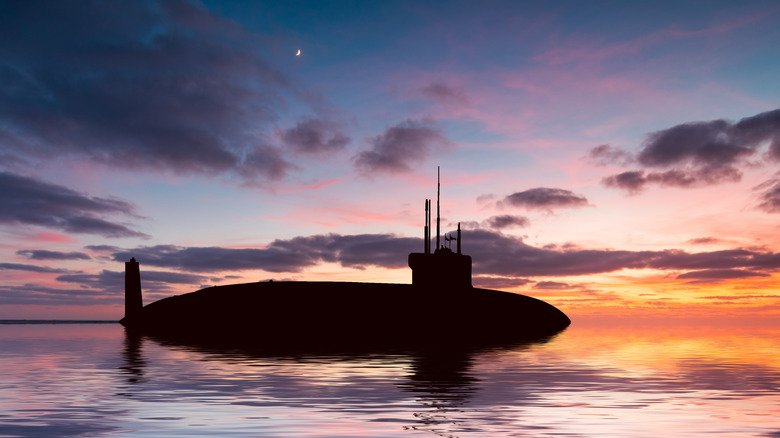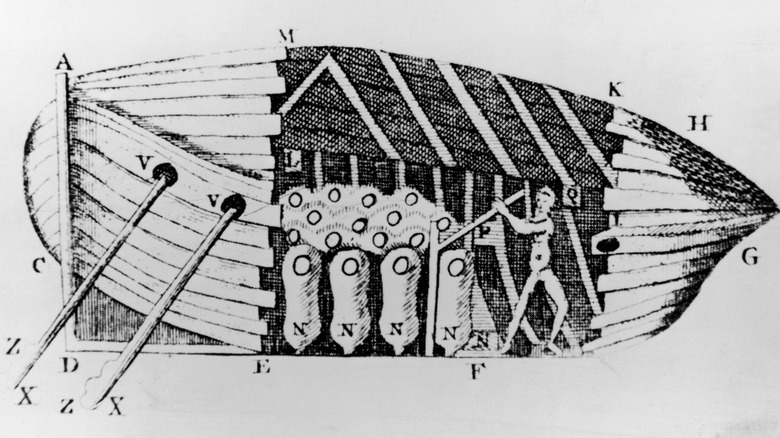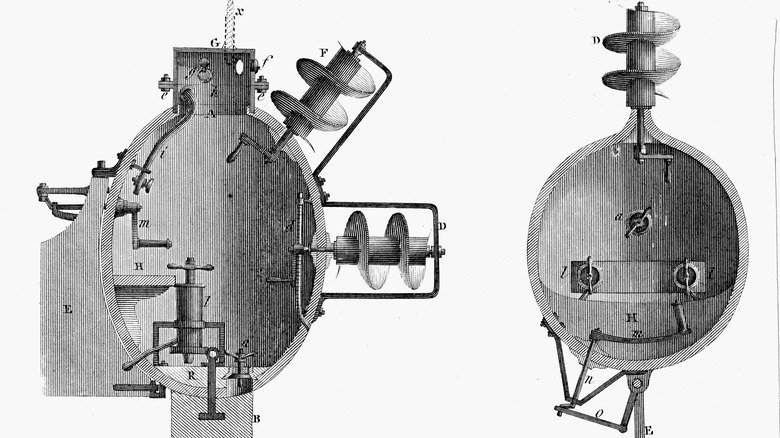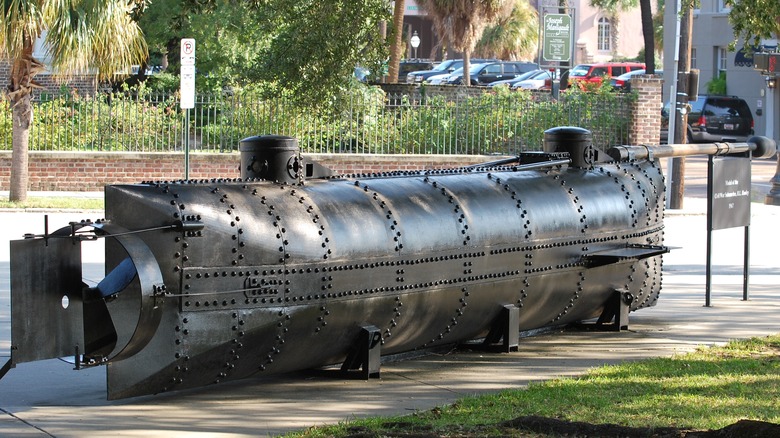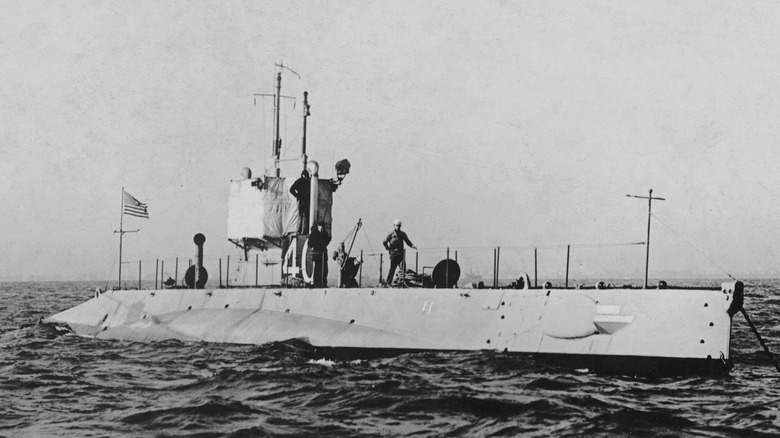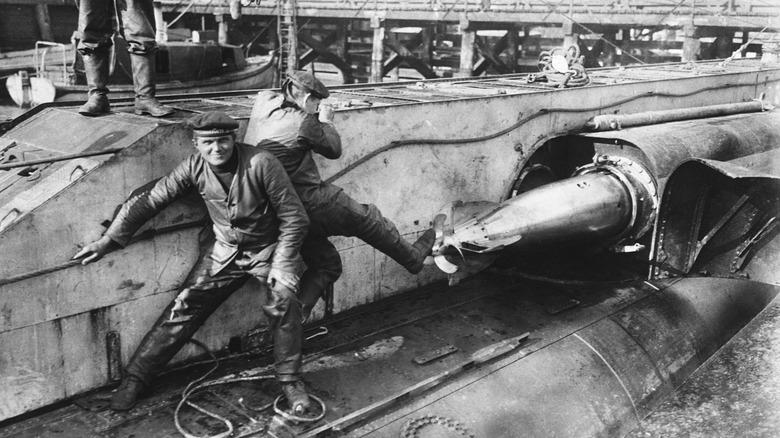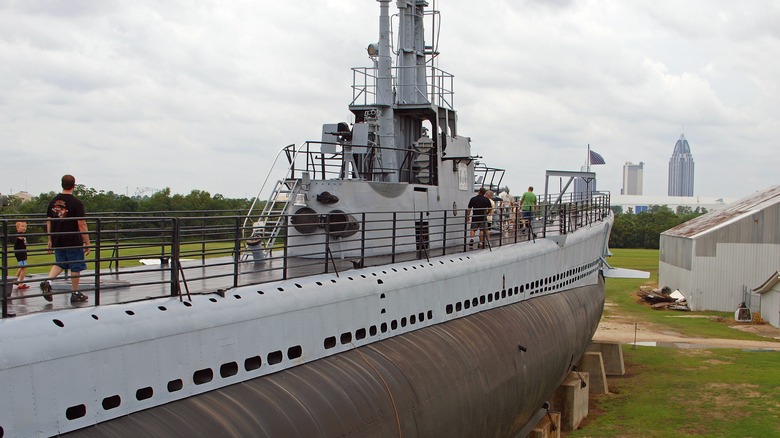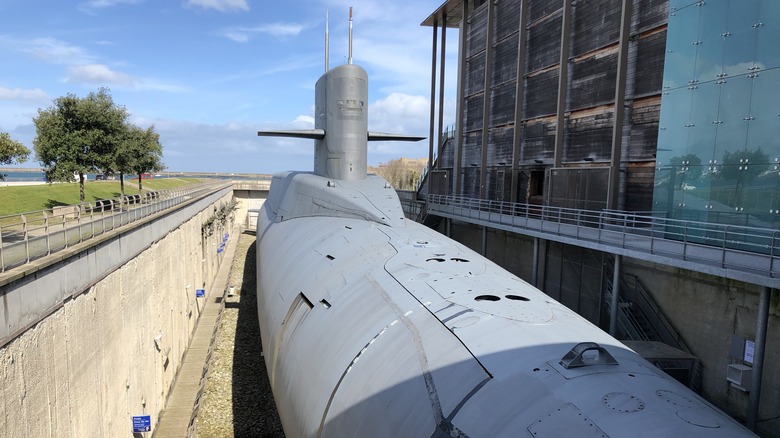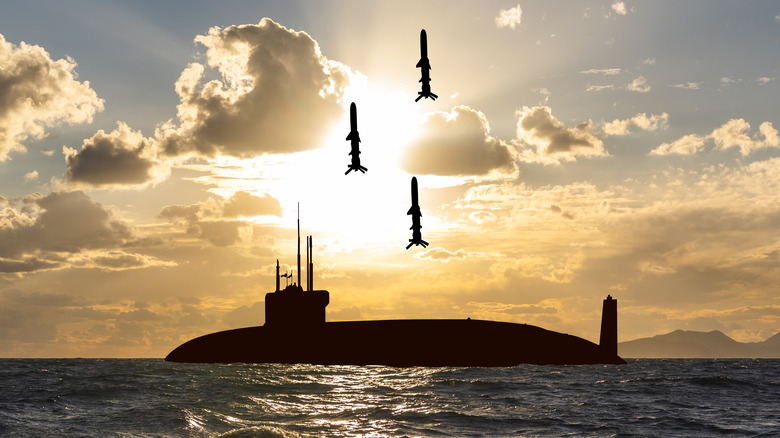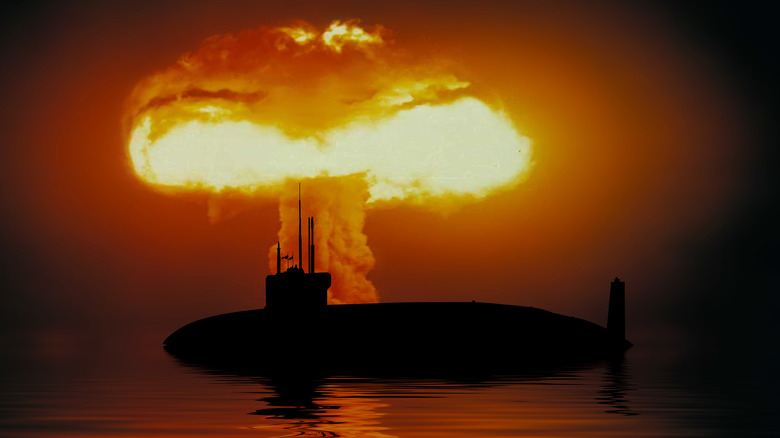The Evolution Of Naval Warfare: The Submarine's Lasting Impact
The drive to explore is one of the most potent human urges. Finding out what's just around the next bend has been a prerogative of humanity since the earliest hunters and gatherers. As long as there is an environment to explore, people will want to explore it.
Although the ocean covers most of our planet, our exploration of the deep sea pales in comparison to our ventures into space. The allure of the deep sea has captivated the human imagination for centuries, with fantasies about exploring its depths dating back to Aristotle's time and, assuredly, even earlier.
For centuries, people resorted to using diving bells. These primitive devices, while ingenious, were limited in use and posed significant dangers to the divers. Plunged into the water, a diving bell trapped a supply of air under its cap, providing divers with a brief foray into the deep.
The absolute dream was something akin to the Nautilus from Jules Verne's "Twenty Thousand Leagues Under the Sea." With Captain Nemo at the helm, the Nautilus used electrical power to supply passengers with everything from fresh air to electric lighting. Imagine Verne's reaction if he got a tour of the world's first nuclear submarine, which not only employed many of these features, but was named Nautilus.
Yet, while Verne may have envisioned a modern submarine, rudimentary undersea vehicles existed for decades when his book was published in June 1870. Like all technology in its pioneering stage, these machines were unreliable, and many men would die before undersea travel became widely viable. Let's explore the history of the submarine, and what its legacy is today.
The earliest designs
Nearly every machine makes the first step from theoretical to actual in the form of a mathematical proof. British mathematician William Bourne did just that in 1580 with the submarine, when he conceived of a wooden and leather boat that could dip beneath the surface by displacing seawater within its hull. But whether Bourne did not trust his own mathematics or preferred the safety of theory, he never tried to build his design.
It wouldn't be until 1620 that Dutchman Cornelius Drebbel, court inventor for King James I of England, built what is credited as the first functional submarine. No plans or documents regarding how it functioned survive. Still, several firsthand accounts, including one from King James himself, report Drebbel undertaking a successful sub-surface journey along the Thames River. With a dozen oarsmen to power his craft, he made a trip about 15 feet beneath the surface, thus supplying the world with proof of the feasibility of the submarine craft.
After Drebbel's journey, engineers and dreamers alike experimented and theorized. French priest Marin Mersenne posited that a cylindrical, copper-sheathed craft would withstand water pressure. Professor Denis Papin built a pair of submarines in 1696 with air pumps to control buoyancy. Carpenter Nathaniel Symons created a sinking vessel in 1729 in which he would entertain passersby by submerging himself for 45 minutes at a time.
Though hardly earth-shattering, the developments of submarine technology before the Industrial Revolution led to the inevitable fate of any new technology: military applications.
The good ship Turtle
At the time of the American Revolution, the weight of British military power seemed nigh on insurmountable, especially to the colonists fighting it. It became popular to believe that unconventional warfare could only be relied upon to have a good effect against such a colossus. And nothing was less conventional than the submarine.
While an undergraduate at Yale, David Bushnell developed underwater mines and torpedoes. Isaac Doolittle was a clockmaker with a talent for tricky mechanisms. The unlikely duo joined forces to build a war submersible to drive British warships out of Boston Harbor.
The result was the Turtle, America's first submarine. With a 3-meter length and a 1-meter beam, the Turtle was designed for a single person's use. After Bushnell had proved that gunpowder could blow up underwater, Doolittle designed a time-bomb mechanism that would attach to a ship's hull, allowing the submersible to back away before detonation.
When the Turtle was ready for combat, the British had already vacated Boston Harbor, but they were still operating in New York Harbor. On September 7, 1776, pilot Ezra Lee made the first-ever submersible attack. He approached the 64-gun HMS Eagle and began anchoring the bomb to the hull. Unfortunately, a layer of copper sheathing prevented proper implantation. While the bomb did end up detonating (with Lee safely away), it did no damage to its target.
The thrice-sunk sub
It took nearly 90 years, and another military conflagration before the submarine drew its first blood. In the American Civil War, the bulk of the U.S. Navy remained with the Union states, resulting in many southern ports enduring blockades that choked their ability to wage war.
In the fall of 1861, machinists Baxter Watson and James McClintock were already working on a three-man submersible when they developed a relationship with lawyer and businessman Horace Hunley. Together, the trio created a pair of submarines, one of which would be world-famous.
The H.L. Hunley was 36 feet long, 3 feet wide, and 4 feet high. Tapered like a cigar, the Hunley needed to be hydrodynamic, driven by a crew of men manually turning the propeller via a crankshaft running through the center of the hull. During testing in Charleston Harbor, the prototype blockade-killer sank twice, killing a total of 11 men, including Horace Hunley, who acted as captain during its second sinking. Raised twice at great cost and effort, the Hunley ultimately set out for combat in February 1864.
An all-volunteer crew of eight propelled the Hunley into Charleston Harbor under the cover of night, where it successfully detonated a spar-torpedo against the side of the USS Housatonic. But the vessel never returned, and remained missing until researchers discovered it in 1995. Theories abound as to why it sunk, including the possibility that its own torpedo may have destroyed it.
Deadlier and more effective
Despite its disastrous end, the Hunley showed that an undersea vessel could have military value, and in the last few decades of the 19th century, inventors, tinkerers, military officers, and engineers experimented to find a source of propulsion that would further revolutionize the submarine.
In the 1880s, Englishman George W. Garrett used a coal-fired steam boiler with a retractable smokestack to power a submersible. Swedish designer Torsten Nordenfelt built a twin-propeller model driven by steam that could submerge to 50 feet. One of his designs even had a rudimentary torpedo tube. Several nations used his design. A craft built by two Englishmen in 1886 used electric motors. They worked, but drained too quickly to be of significant use.
Submarine development was in full swing by the dawn of the 20th century. Multiple nations strove to perfect what navies increasingly felt could be an effective weapon. It wasn't until John Phillip Holland combined internal combustion engines and battery power that submarines reached a whole new level.
The diesel-electric submarine dominated the first half of the 20th century. On the surface, powerful diesel engines provided power and charged battery banks. Beneath the surface, the battery banks (which did not require oxygen) drove the boat. Using compressed air to empty and fill ballast tanks, a submarine could now travel at length. When the First World War erupted in 1914, submarine services were primed for the fight.
Unrestricted Submarine Warfare
With limited coastline along the Baltic and North Seas, Germany found itself engaged in a naval arms race at the beginning of the 20th century. England had ruled the surface of the seas for centuries, but Germany's new weapon could negate that power. The Hunley's crew would be stunned to see what a modern U-boat could do in 1914, but they might at least recognize the boat for what it was, as it retained the same oblong cigar shape of the 19th century vessel.
German U-boats could reach depths of 165 feet and speeds of 16 knots on the surface and 8 knots below. They also carried torpedoes launched from tubes, and those failed, a deck gun could smash targets on the surface.
By the end of September, Germany's U-9 submarine had sunk a quartet of British cruisers, killing nearly 2,000 sailors. Germany soon announced it would engage in unrestricted submarine warfare. Namely, German U-boats could sink virtually any vessel without warning. This policy would ultimately spell disaster for Germany. America joined the war on the side of the British after a German U-boat attacked a passenger ship called the Lusitania, killing many American citizens.
World War I marked a major development in submarine perception. No longer just for the suicidally committed or crackpot tinkerer, submarines had proved their impact not just in battle but on the geopolitical stage, a role they would play again in the future.
World War II
Submarines played a decisive role in the First World War, and development continued in the interwar years. By the time World War II broke out in 1939, a standard sub was 200 feet long, could achieve 15 knots, and dive to 650 feet in 20 seconds. Perhaps even more impressive, they could now stay at sea for seven to eight weeks without resupplying.
This capability resulted in a fierce shipping war in the Atlantic Ocean, with German U-boats prowling against supply convoys sent to relieve the besieged British. Ultimately, 3,500 Allied merchant ships and 175 warships, along with 72,000 Allied sailors, went to the bottom. But the U-boat veterans paid a steep price: 75% of the 40,000 submariners in the Kriegsmarine lost their lives between 1939 and 1945, along with 783 U-boats.
Meanwhile, the attack on Pearl Harbor did not deal the knockout blow to America's aircraft carrier fleet the Japanese envisioned. Along with its fleet of aircraft carriers and swarms of fighter planes, the American navy struck out with its "Silent Service" — a fleet of Gato-class diesel-electric submarines.
Upgraded with powerful weaponry, communications equipment, and tracking gear, American submarines lurked in choke points and hunted merchant shipping with a vengeance. Engaging in its own unrestricted submarine warfare, the U.S. Navy sunk 686 Japanese warships and 2,346 merchant ships. It lost 52 submarines and nearly 4,000 sailors in the process.
Subs go nuclear
The use of the atomic bomb did not just end the Second World War, it ushered the planet into an entirely new age. Not only would the threat of nuclear attack become a primary concern for the duration of the Cold War, but nuclear power would change how submarines operated.
The advent of the nuclear submarine was a monumental breakthrough. Unlike traditional submarines that relied on internal combustion engines or batteries, a nuclear-powered submarine could operate without oxygen and even provide breathable air to the crew. This revolutionary technology eliminated the need for the submarine to surface for battery recharging or to run noisy diesel engines.
On September 30, 1954, the American Navy launched the first nuclear-powered submarine, the USS Nautilus (SSN-571). Suddenly, the only thing limiting the length of a patrol was the food supply (and the crew's mental health). A technological leap like that would undoubtedly alter the submarine's capabilities. Nearly endless patrol? No need to surface outside of emergencies? A submarine could transit the globe without its enemies being any the wiser.
In the post-war era of military competition, the Soviet Union and the United States engaged in a fierce race to outdo each other in the innovation, construction, and deployment of what would become the most advanced nuclear submarines in the world. However, in 1960 the role of submarines underwent a radical transformation.
Mutually assured destruction
As Cold War tensions increased, so to did humanity's capacity to destroy the world in a matter of minutes. Inter-continental ballistic missiles tipped with nuclear warheads pointed to critical locations all around the United States and the Soviet Union. A launch by one side would trigger a launch by the other. The only thing preventing such an attack was the guarantee that the other side would suffer as badly or worse than your side.
The calculus of this arrangement shifted in 1960 with the USS George Washington (SSBN-598). While submarines would continue to be used as anti-ship weapons, the George Washington had one exceptional capability: It could launch nuclear missiles while submerged. Carrying up to 16 Polaris missiles, the "boomer" sub could surreptitiously slip to any corner of the globe, lie beneath the seas, and unleash nuclear hell at a moment's notice. The Soviet Union quickly followed, building its first nuclear-powered submarine, the K-3, in 1957, and introducing its own missile subs in 1960.
No longer would the primary use of submarines be attacking enemy ships. Suddenly, the lowly submarine swelled with importance, gaining a promotion from pawn to queen on a chessboard. With a potential nuclear attack submerged just offshore, mutually assured destruction didn't involve quite the same zero-sum math.
The chessboard today
The Cold War ended when the Soviet Union dissolved, but the age of the submarine did not. Currently, six nations have nuclear-powered submarines in their arsenals: the United States fields 68 nuclear submarines, followed by the United Kingdom with 11, Russia with 40, France with 8, China with 12, and India with 1. Several of these states also maintain diesel-electric subs relegated to more traditional patrolling roles. However, the biggest powers in the world work hard to retain and maintain the bafflingly complex machines that patrol the planet's seas.
Recently, a nuclear missile submarine, the USS Tennessee, surfaced off the coast of Norway. A reveal like this is rare, and while some speculate it was in response to Russian nuclear saber-rattling, it's safe to say that its appearance did not go unnoticed.
Submarines have evolved beyond crackpot dream or mathematical proof, past the stage when they were more dangerous to their own crew than the enemy — these days they're the most important chess pieces on the geo-political chessboard. Many military technologies fall by the wayside, but it seems it will be a long time before the submarine goes the way of the battleship or the halberd.
